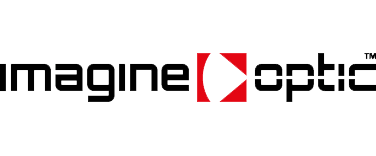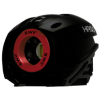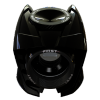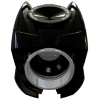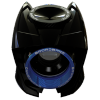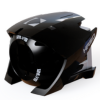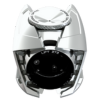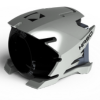Introduction to Shack-Hartmann Wavefront Sensor
Origins and Evolution
In the fascinating realm of optical science, the Shack-Hartmann Wavefront Sensor stands as a testament to human ingenuity. Originating from principles first conceptualized in the early 20th century, this sensor revolutionized the way we perceive and manipulate light. Initially developed for astronomical applications, its evolution over time has led to diverse uses in various fields, a journey that mirrors the advancement of optical technology itself.
Basic Principles and Mechanics
At its core, the Shack-Hartmann Wavefront Sensor operates by dissecting the wavefront of light into numerous smaller sections. This dissection is achieved through an array of lenslets, each focusing light onto a sensor. The genius of this design lies in its simplicity and efficiency, offering a clear and accurate measurement of wavefront distortions.
Discover our set of Shack- Hartmann wavefront sensors !
Understanding Wavefront Aberrations
Definition and Significance
Wavefront aberration is a term that may sound complex, but it simply refers to the deviation of a light wave from a perfect wavefront. These aberrations are crucial in many optical systems, as they can significantly affect image quality. Understanding and correcting these aberrations is essential in fields ranging from astronomy to ophthalmology, making the role of the Shack-Hartmann Sensor indispensable.
Types of Aberrations and Their Impact
The world of wavefront aberrations is diverse, including spherical aberrations, astigmatism, coma, and more. Each type impacts an optical system differently, leading to various image distortions. Recognizing and rectifying these aberrations is a complex process, one where the Shack-Hartmann Sensor excels due to its precision and versatility.
The Design and Components of Shack-Hartmann Wavefront Sensor
Core Components and Layout
The elegance of the Shack-Hartmann Sensor lies in its design. Comprising an array of lenslets, a wavefront detector, and sophisticated software, it captures and analyzes light with remarkable precision. Each component plays a critical role, from the lenslets that segment the wavefront to the software that interprets the data.
How it Differs from Other Sensors
What sets the Shack-Hartmann Sensor apart from other wavefront sensors is its unique ability to provide direct, real-time feedback on wavefront distortions. This distinction is critical in applications where speed and accuracy are paramount.
Operational Mechanism
Step-by-Step Process
Understanding the operational mechanism of the Shack-Hartmann Sensor is key to appreciating its capabilities. The process begins with the incoming wavefront impacting the lenslet array, followed by the generation of focal spots. These spots are then analyzed to determine the wavefront’s shape, a process that reveals the nature and extent of any aberrations.
Data Acquisition and Interpretation
The data acquired by the Shack-Hartmann Sensor is both rich and complex. Interpreting this data requires sophisticated software capable of translating the subtle variations in focal spot positions into meaningful information about the wavefront’s characteristics.
Applications in Various Fields
Astronomy and Astrophysics
In the expansive field of astronomy, the Shack-Hartmann Wavefront Sensor has become an invaluable tool. Its ability to precisely measure and correct wavefront aberrations is crucial in telescopes, enhancing our view of the universe.
Ophthalmology and Vision Science
The Shack-Hartmann Sensor has also found a significant role in ophthalmology. It aids in diagnosing and treating a range of vision problems, demonstrating its versatility beyond the realm of traditional astronomy.
Advancements in Shack-Hartmann Technology
Recent Innovations and Improvements
The field of Shack-Hartmann technology is continuously evolving, with recent advancements focusing on enhancing accuracy and reducing limitations. These innovations are shaping the future of optical testing, pushing the boundaries of what’s possible.
Future Prospects
Looking ahead, the potential of the Shack-Hartmann Sensor seems boundless. Its applications could expand into new realms, including quantum computing and nanotechnology, showcasing its adaptability and enduring relevance.
Shack-Hartmann wavefront sensor in Optical Testing
Role in Lens and Mirror Testing
In optical testing, the Shack-Hartmann Sensor is a game-changer. Its precision in detecting aberrations makes it an essential tool in the manufacturing and testing of lenses and mirrors, ensuring the highest quality in optical components.
Case Studies and Examples
Through various case studies, the effectiveness of the Shack-Hartmann Sensor in real-world scenarios is evident. From refining telescope mirrors to enhancing camera lenses, its impact is wide-reaching.
Comparative Analysis
Shack-Hartmann vs. Other Wavefront Sensors
While there are other wavefront sensors available, the Shack-Hartmann Sensor offers unique advantages in terms of simplicity, reliability, and versatility. This comparative analysis highlights its superiority in various applications.
Pros and Cons
Like any technology, the Shack-Hartmann Sensor has its pros and cons. Understanding these helps in making informed decisions about its use in specific scenarios.
User Guide for Shack-Hartmann Sensor
Setup and Calibration
Setting up and calibrating a Shack-Hartmann Sensor is a critical step in its operation. This guide provides a detailed walkthrough, ensuring optimal performance.
Common Challenges and Troubleshooting
Despite its robust design, users may encounter challenges with the Shack-Hartmann Sensor. This section addresses common issues and offers practical solutions for troubleshooting.
Advantages and Limitations
Strengths of Shack-Hartmann Sensor
The strengths of the Shack-Hartmann Sensor are numerous, including its precision, versatility, and ease of use. These advantages make it a preferred choice in many optical applications.
Limitations and Considerations
However, it’s important to recognize its limitations, such as sensitivity to environmental factors and the need for precise calibration. Understanding these considerations is crucial for effective use.
FAQs on Shack-Hartmann Wavefront Sensor
Conclusion
Summary and Final Thoughts
In conclusion, the Shack-Hartmann Wavefront Sensor is a remarkable tool in the world of optics. Its versatility, precision, and range of applications make it an invaluable asset in advancing our understanding and manipulation of light. As technology continues to evolve, the Shack-Hartmann Sensor will undoubtedly remain at the forefront, shaping the future of optical science.
